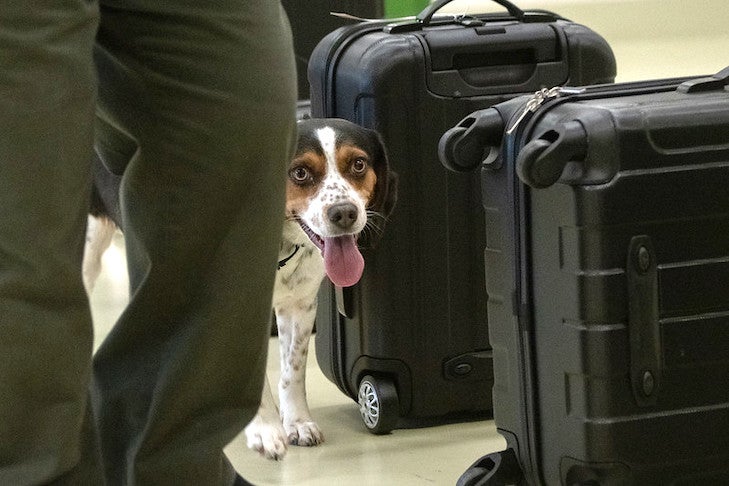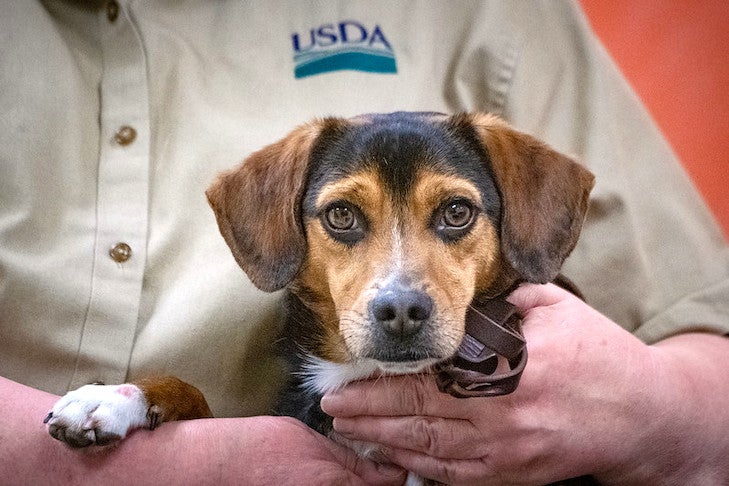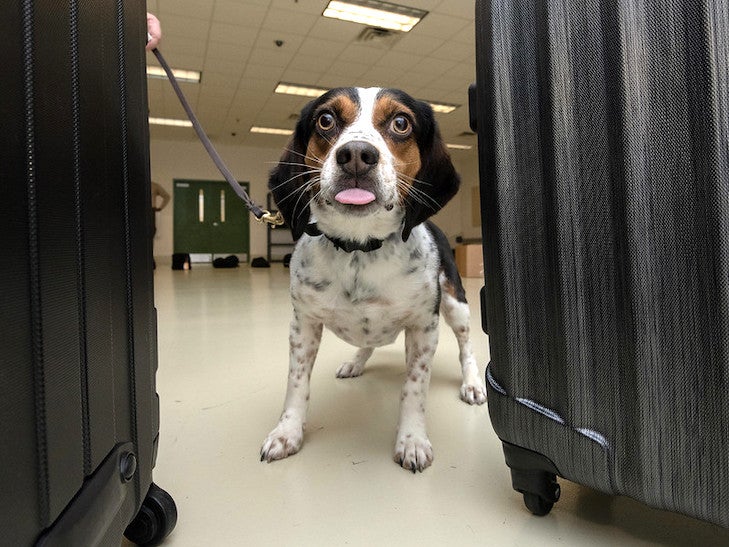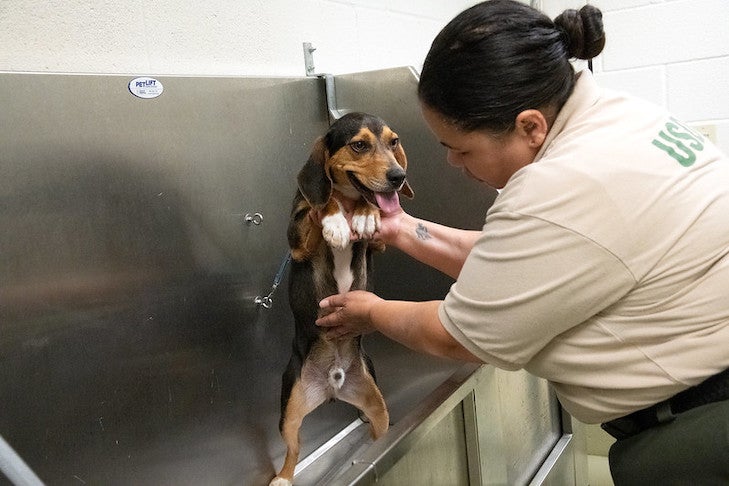- The Beagle Brigade is a team of dogs trained to inspect U.S. airports for prohibited agricultural items.
- Each Beagle goes through 13 weeks of rigorous training before starting their job.
- See the Beagle Brigade in action at the upcoming AKC National Championship in December.

Those adorable Beagles you see at major airports throughout the United States aren’t there to provide cuddles or comfort. They’re part of the Beagle Brigade, a team of hard-working dogs employed by the U.S. Department of Agriculture (USDA) to sniff out plants and animals that have the potential to carry harmful diseases onto U.S. soil. Learn more about the Beagle Brigade and how these pups are instrumental in keeping pestilence at bay.
The Beagle Brigade is On the Job
About 120 Beagles are employed by the U.S. Department of Homeland Security’s Customs and Border Protection, as well as state and local government agencies and departments.
Spread out across 88 major international airports in the U.S., these specially trained detector dogs use their powerful sense of smell to locate food and other plant and animal products that are prohibited in the U.S. When one of these pups comes across an illicit scent, they let their handler know by sitting down, and the handler takes it from there.

Why Use Beagles?
Beagles are the preferred breed for use in busy airports for a number of reasons. Their size and appearance prevent them from intimidating hurried travelers, and their calm and friendly temperaments make Beagles a good fit for interacting with large crowds of people. As scent hounds, Beagles also have a highly developed sense of smell that makes them ideally suited for this line of work.
But the Beagle Brigade is only the most visible part of the detector dog program. It also employs Labrador Retrievers and Russell Terriers in less visible areas such as cargo holds. Labs are especially adept at detecting an invasive rodent species known as nutria, as well as the coconut rhinoceros beetle, a pest that is notorious for destroying coconut palm trees in Hawaii, Guam and American Samoa. In addition, Russell Terriers hunt down brown tree snakes in ships and aircraft leaving Guam to prevent them from spreading to snake-free areas where they could do damage to the local ecosystem.
From Rescue Dog to Airport Guardian
Although some of the dogs are donated to the detector dog program by private owners, most are rescued from animal shelters and dog rescue organizations. From there, the dogs go to the National Detector Dog Training Center (NDDTC) in Newnan, Georgia, where they enter a 13-week training program. The dogs are taught through positive reinforcement to detect specific scents and how to signal their handlers when they detect one.
The training program also provides plenty of time for the dogs to bond with their handlers, developing a close relationship of mutual trust and confidence in one another’s abilities. By the end of the training period, handlers usually know the dogs so well that they can detect even the most subtle changes in their dog’s behavior.
The NDDTC works hard to ensure each dog’s well-being, providing them with plenty of play time and enrichment activities in addition to healthcare and balanced nutrition. Dogs who aren’t able to complete the program and become detector dogs are instead matched with good homes.

A Day in the Life of a Detector Dog
The detector dogs in the Beagle Brigade typically put in an eight-hour workday along with their handlers. After breakfast and a quick health check, the team arrives at the airport where they spend 45 minutes out of every hour making their rounds and inspecting flights. That leaves each dog with 15 minutes each hour to take a break, with a longer rest period in the middle of their shift while their handler takes an hour off for lunch.
Throughout their day, these vigilant pups sniff out all kinds of potential agricultural hazards that threaten the health and safety of both people and the environment. Detector dogs find everything from illegal bush meats to exotic plants and soil and even exotic birds that people try to smuggle into the country. At the end of their shift, the dogs return to the federal facility where they’re housed for a well-earned night of play and rest.
What Happens When Detector Dogs Retire
Typically, detector dogs serve until the age of nine, which is the mandatory retirement age for members of the Beagle Brigade and other detector dogs in the program. Occasionally, medical issues force some dogs into early retirement.
Once they reach retirement, it’s not unusual for the dogs to go live with their handlers as full-time pets. When this doesn’t happen, the NDDTC finds the dogs loving homes where they can live out the rest of their lives in leisure.

See the Beagle Brigade in Action
Meet the Beagle Brigade this December at the AKC National Championship in Orlando, Florida. Look for the USDA booth, where you can learn more about the Beagle Brigade and detector dog program and watch live demonstrations of the dogs and their handlers in action.

